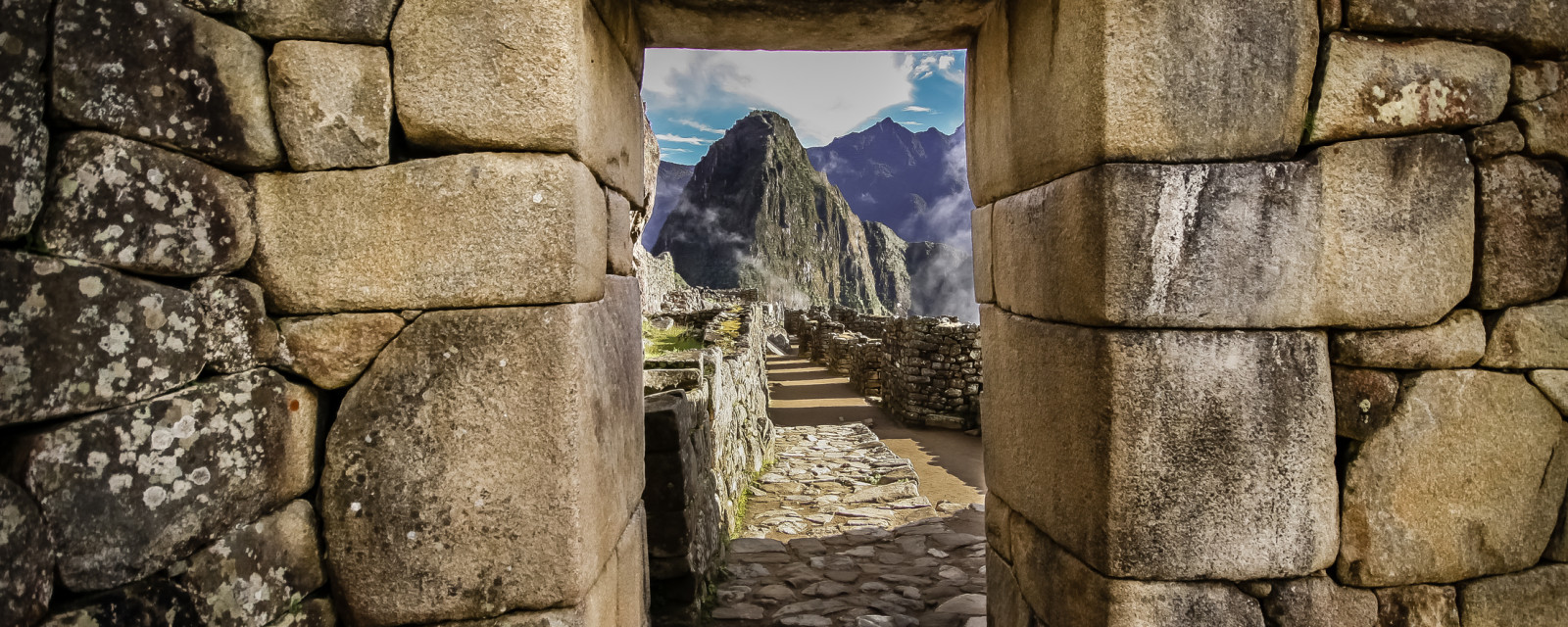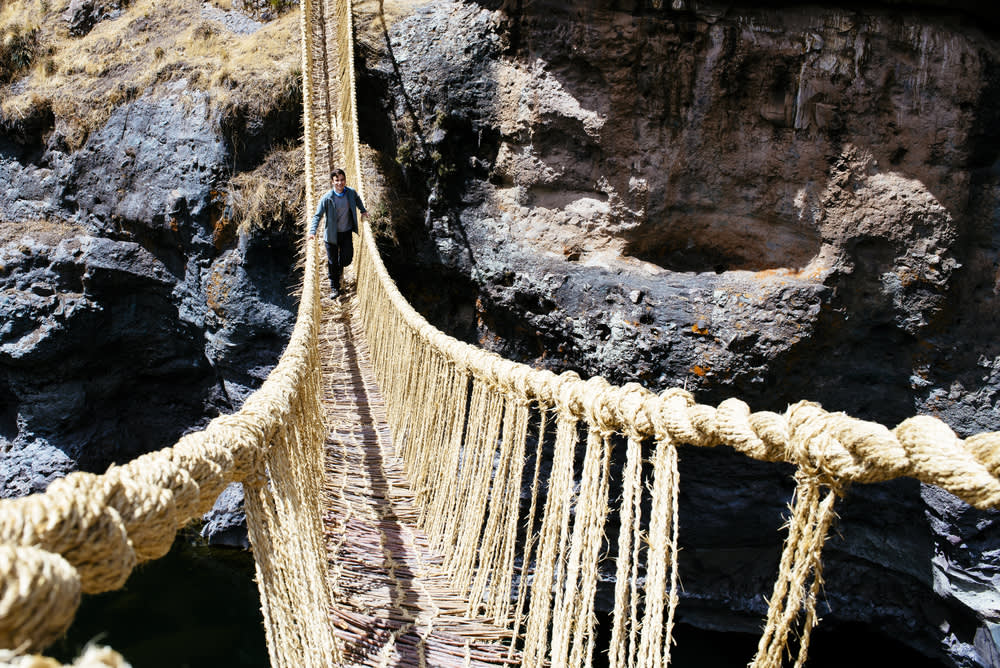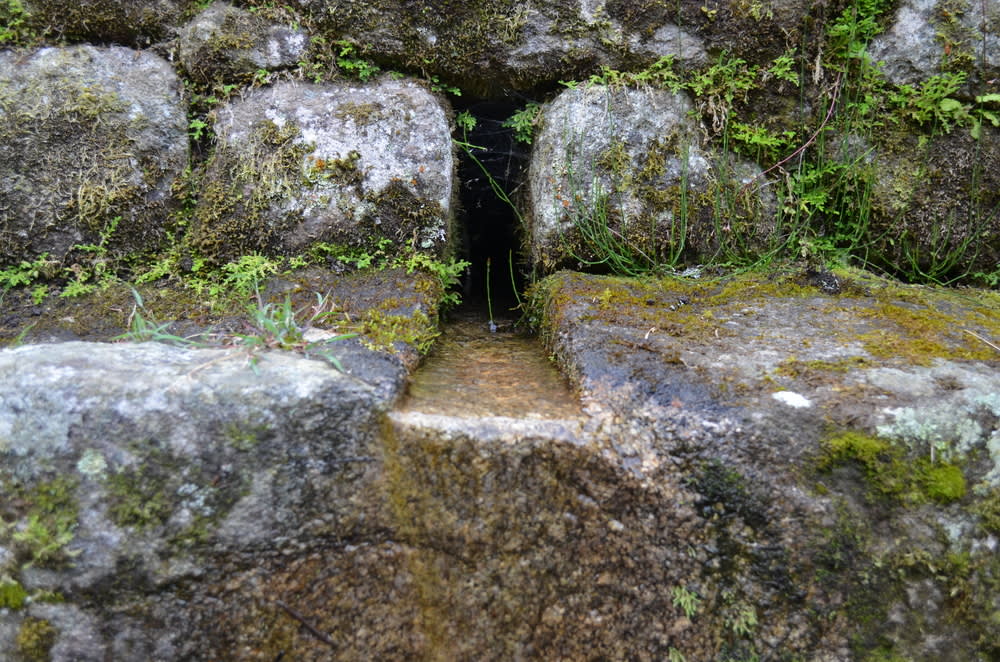Inca Architecture and Civil Engineering
From Machu Picchu to a biodegradable suspension bridge, the time-tested remnants of the Inca’s extraordinary achievements in engineering and architecture continue to amaze visitors.

For more than 300 years, the Inca ruled a large swathe of pre-Columbian South America, from Ecuador to Chile. Although their empire diminished with the Spanish conquest that began in 1533, their remarkable achievements in architecture and engineering live on, most notably in the iconic mountain citadel of Machu Picchu and the ancient capital of Cusco.
In 1911 academic-turned-adventurer Hiram Bingham marveled at Incan ingenuity. How did they manage to build such long-lasting structures with no iron tools or wheels? Likewise, Ken Wright, a modern civil engineer who studies Machu Picchu, told NOVA he is repeatedly awed by the site’s technical and aesthetic design. Wright observed, “the whole system of Machu Picchu is a marvel—not just the water system or the most beautiful wall—but how everything fits together.”
Remnants of the Inca’s extraordinary skills dot the lands over which they once ruled: a suspension bridge built from biodegradable materials, a well-organized road network protected by containment walls and, of course, Machu Picchu. Here is a glimpse into some of their standout engineering achievements that continue to impress more than 500 years later.

Perfectly Cut Stones
When the ninth Inca ruler Pachacuti came into power in 1438, he rebuilt the capital of his growing empire, Cusco, in stone. The surviving walls of those buildings continue to line the modern streets of Cusco, where visitors admire not only the size of the stones but also the perfect fit between stones set together at elaborate angles. This precision, often within millimeters, was remarkably achieved without the use of iron tools or mortar. One hypothesis proposes that stones were ground against each other to achieve a near-perfect fit. Another suggests that stonemasons repeatedly fitted and pounded the stones with smaller stones until the joints aligned perfectly.

25,000 Miles of Road
An extraordinary network of roads called the Qhapaq Ñan or Great Inca Road integrated the empire’s four regions. It meandered across nearly 25,000 miles of varied landscape, from rain forest to desert, up mountains and through valleys. That’s a distance equivalent to the Earth’s circumference (24,902 miles) and about seven times longer than the longest United States highway (3,365 miles). Inca engineers tailored the road to the landscape, using containment walls, paving stones, stairways and filled earth to adjust to the terrain. Today, you can follow portions of this road network through six South American countries, including Peru.

A Biodegradable Suspension Bridge
Going back at least 500 years, Quechua-speaking communities in Peru have rebuilt the Q’eswachaka rope suspension bridge over the Apurímac River, about 100 miles south of Cusco. The last surviving Inca bridge of its kind, it is reconstructed from rope cables handcrafted in the same way they were half a millennium ago—with twisted, woven grass. Every one to two years, villagers come together for a three-day renewal ceremony during which they restore the bridge’s structure and strengthen cultural ties to their Inca ancestors.

A Complex Water Management System
The Inca pantheon included Pariacaca, a god of water and rain, so it’s no surprise that fountains and canals take center stage at Machu Picchu. But these features were also a necessity. Perched high in the Andes, Machu Picchu receives heavy rainfall throughout the year, so the subsurface drainage system built by the Inca is one major reason the city is still standing today. Engineers also constructed a sloped canal system that used gravity to pull water from the nearby mountain spring and included valves to control any overflows during the rainy season.

